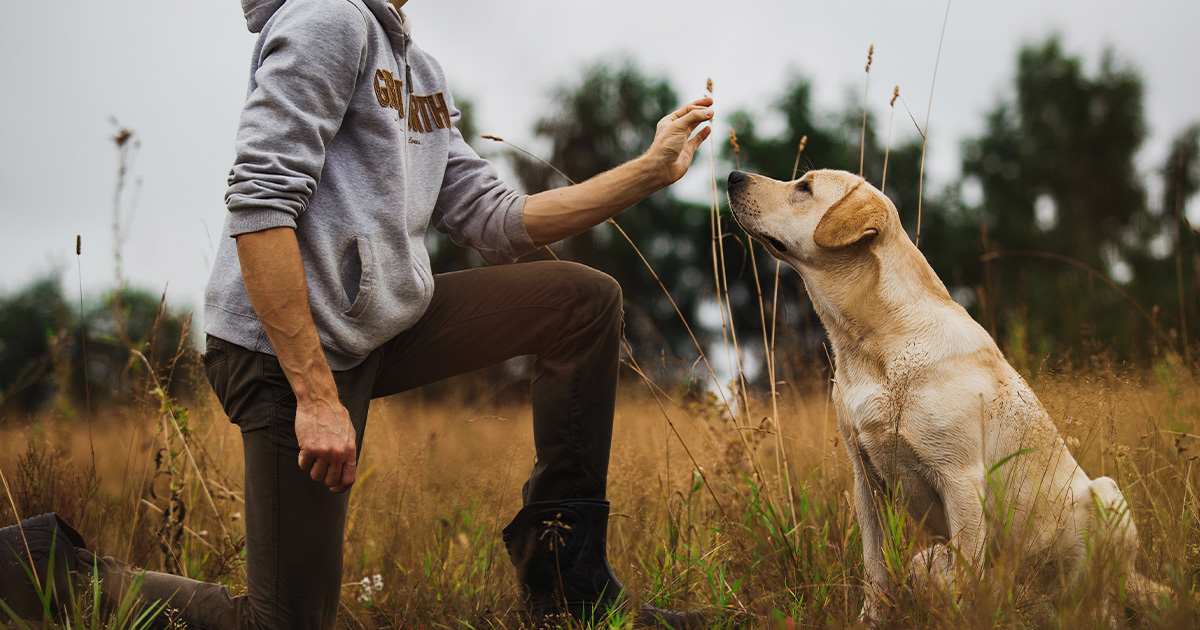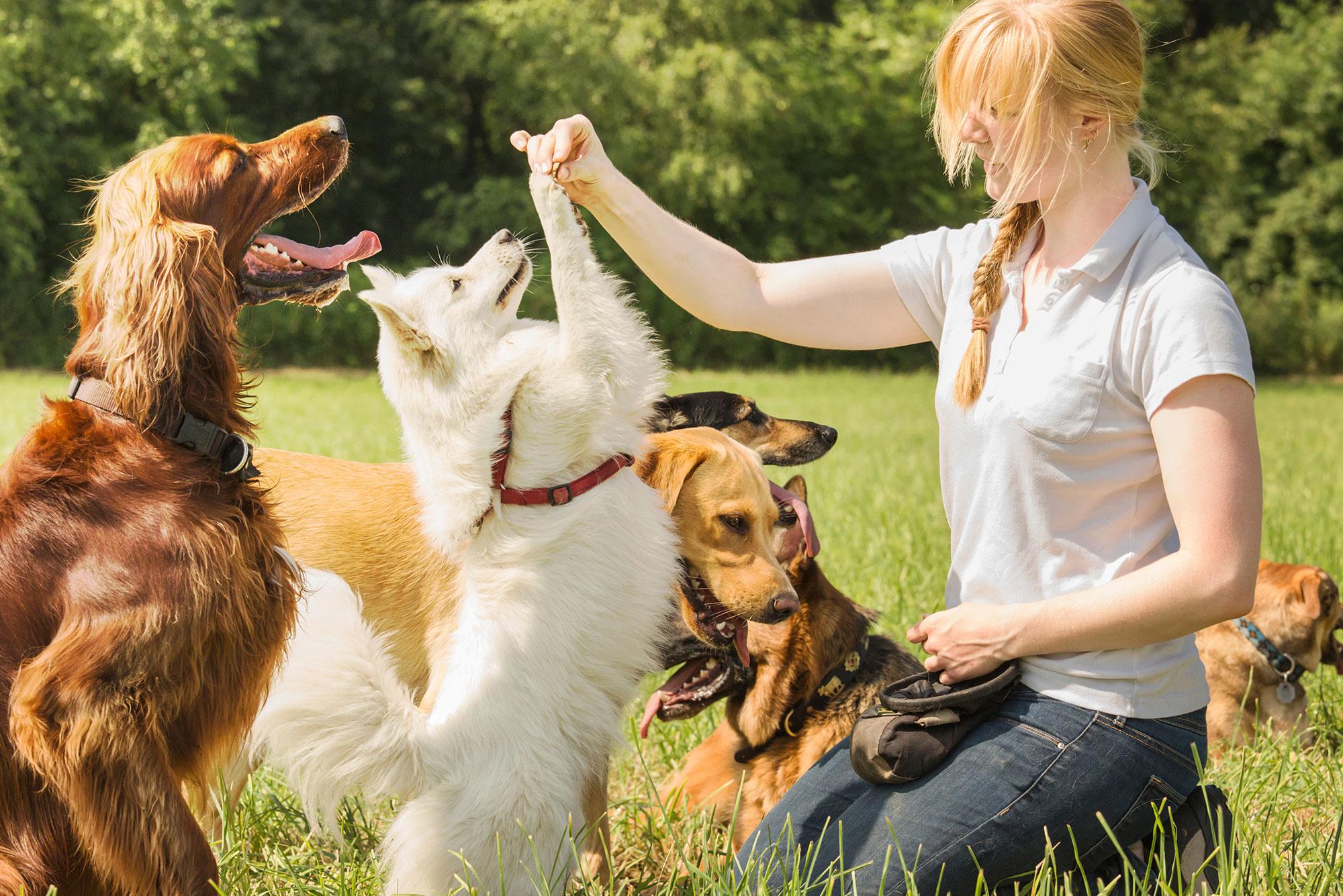Step-by-Step Approach to Dog Training: Simple Tips for Every Dog Owner
Step-by-Step Approach to Dog Training: Simple Tips for Every Dog Owner
Blog Article
Newbie's Overview to Effective Pet Dog Training in your home
Successfully educating a canine at home requires a nuanced understanding of canine actions and reliable communication approaches. Establishing clear training goals, using top quality rewards, and keeping consistency across family participants are important aspects. Integrating training into everyday regimens can boost both interaction and retention.
Comprehending Canine Actions
Comprehending pet dog habits is necessary for effective training and promoting an unified relationship in between human beings and their canine companions. Pet dogs communicate mainly via body movement, articulations, and faces, making it crucial for proprietors to translate these signals properly. Recognizing behaviors such as tail wagging, grumbling, or shrinking can give understandings into a dog's emotional state and objectives.

Common behavior concerns, such as hostility, anxiousness, or extreme barking, usually stem from misconceptions or unmet requirements. Observing and addressing these issues immediately can prevent escalation and guarantee a positive training experience. By fostering a deep understanding of pet actions, owners can customize their training techniques to suit their canine buddies, ultimately bring about a mannerly and happy animal.
Important Educating Devices
A fully equipped training space can considerably enhance the efficiency of dog training at home. Vital training devices ensure that both the dog and the trainer can engage in productive sessions that cultivate learning and bonding.

Purchasing a tough chain and a comfortable, well-fitting collar or harness is vital for safety and security and control. These devices aid develop borders and guarantee the pet stays safe throughout training. In addition, an assigned training area, devoid of diversions, help focus for both the dog and the trainer.
Training aids such as training pads, cones, or dexterity devices can additionally enhance the experience by presenting variety and difficulties. Having a note pad or electronic application for tracking progress can be important, allowing you to note successes and areas for renovation. Making use of these essential tools will produce a favorable training setting and lay the foundation for reliable learning.
Producing a Training Routine
Developing a regular training regimen is essential for effective dog training at home. A well-structured regular not only aids in enhancing preferred habits however also provides your canine with a complacency and predictability. To create an efficient training regular, begin by identifying certain training goals, such as standard commands, chain strolling, or housebreaking.
Pick a designated time each day for training sessions, preferably when your pet is receptive and alert. Sessions should be short, about 5 to 15 mins, to keep focus and prevent fatigue. Consistency in timing and environment will improve your dog's discovering experience.
Integrate training right into daily tasks to enhance skills. Technique commands during walks or mealtime, which incorporates finding out right into all-natural routines. Additionally, continue to be versatile and adjust the regular as necessary, suiting your pet dog's energy degrees and state of mind.
Positive Support Strategies
Favorable support techniques are essential to effective canine training, promoting preferred behaviors with incentives instead of punishment. This approach uses favorable stimulations, explanation such as treats, appreciation, or playtime, to motivate pets to repeat certain activities. The foundation of this approach is timing; benefits need to be provided immediately complying with the desired actions to create a clear association.
When executing positive reinforcement, it is important to pick rewards that discover this are motivating for your canine. High-value treats, such as little items of poultry or cheese, can be specifically reliable during training sessions. Furthermore, differing the incentives can keep your canine's passion and enthusiasm.
Start with straightforward commands, like "rest" or "remain," and gradually development to more intricate jobs. Uniformity is essential; guarantee that all household participants make use of the same commands and benefit systems to avoid complication.
Moreover, it is essential to stay client and prevent irritation. Pets, like human beings, learn at their own pace. By fostering a helpful training environment through positive support, you can enhance your canine's knowing experience while enhancing the bond in between you and your hairy friend, laying the foundation for effective training outcomes.
Typical Educating Obstacles
While educating a pet in your home can be a gratifying experience, it commonly includes a set of typical challenges that can check both patience and uniformity. One prevalent issue is interruption. Canines may end up being easily sidetracked by sounds, motions, or perhaps scents in their environment, making it difficult to keep their emphasis throughout training sessions.
Another difficulty is variance in commands and reinforcement. If family participants make use of various hints or incentives, it can impede and confuse the canine progression. click for more Establishing a unified technique is vital for effective interaction.
In addition, pets can experience stress or anxiety, especially if they do not recognize what is anticipated of them. This can bring about unfavorable behaviors, such as barking or eating.
Finally, the timing of support is essential (Dog training). Delayed rewards can decrease the effectiveness of positive reinforcement, as canines might stop working to connect the behavior with the incentive
Overcoming these challenges needs commitment, clear communication, and a structured training plan. Identifying and attending to these typical challenges will certainly lead the way for an extra satisfying and successful training experience in the house.
Conclusion
In verdict, successful dog training at home requires an extensive understanding of canine habits and effective interaction approaches. By developing clear training goals and utilizing top notch deals with alongside favorable support, the training process ends up being much more fulfilling for both the fitness instructor and the canine.
Developing a regular training routine is important for effective pet dog training at home.Positive reinforcement strategies are fundamental to efficient canine training, advertising preferred behaviors through benefits rather than punishment (Dog training). By cultivating a helpful training atmosphere via positive reinforcement, you can boost your canine's learning experience while strengthening the bond between you and your furry buddy, laying the foundation for effective training end results
In verdict, successful pet training at home demands a comprehensive understanding of canine habits and effective interaction techniques. By developing clear training objectives and using premium deals with together with positive reinforcement, the training process becomes a lot more satisfying for both the canine and the trainer.
Report this page